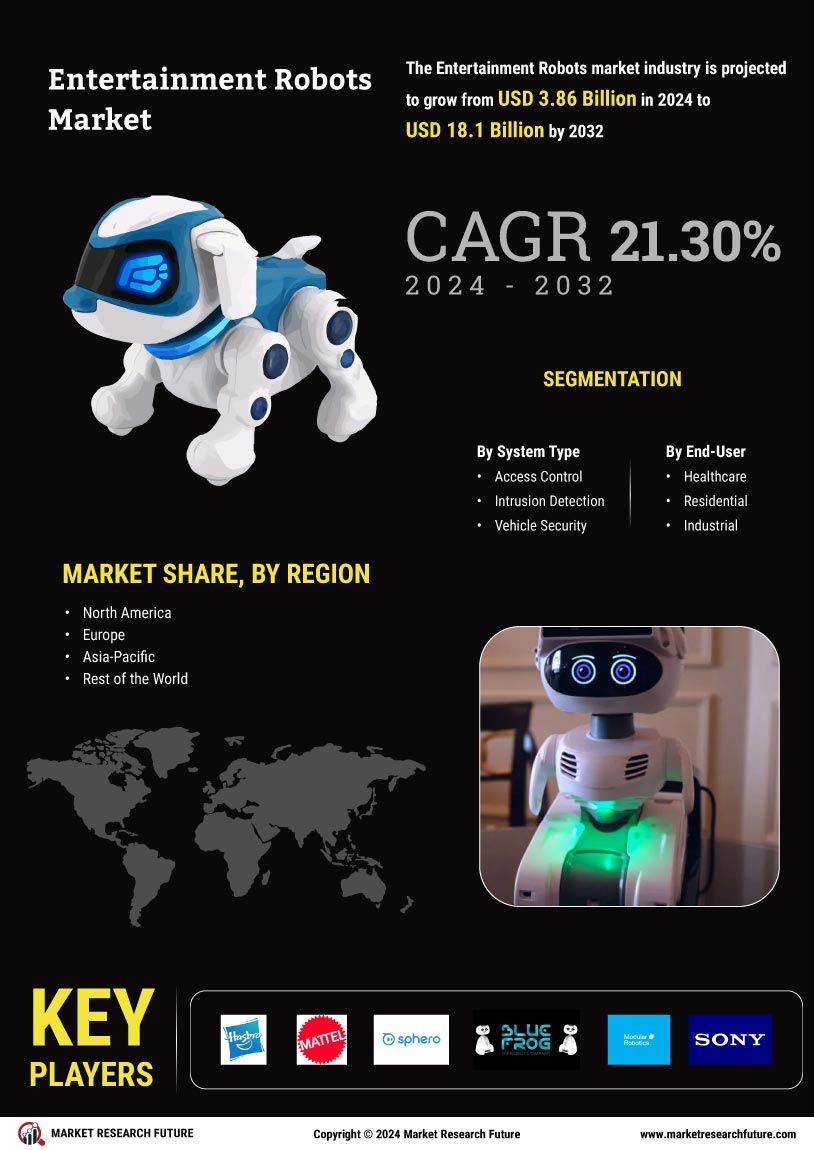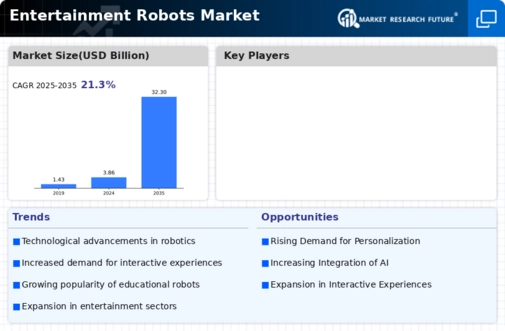Leading market players are investing heavily in research and development in order to expand their product lines, which will help the Entertainment Robots market, grow even more. Market participants are also undertaking a variety of strategic activities to expand their global footprint, with important market developments including new product launches, contractual agreements, mergers and acquisitions, higher investments, and collaboration with other organizations. To expand and survive in a more competitive and rising market climate, Entertainment Robots industry must offer cost-effective items.
Manufacturing locally to minimize operational costs is one of the key business tactics used by manufacturers in the global Entertainment Robots industry to benefit clients and increase the market sector. In recent years, the Entertainment Robots industry has offered some of the most significant advantages to medicine.
Major players in the Entertainment Robots market, including Kuk of Germany, Hasbro Inc. of the United States, Mattel Inc of United States, Sphero of United States, Bluefrog Robotics of France, Modular Robotics of United States, Robobuilder of South Korea, Sony Corporation of Japan, and Lego of Denmark, are attempting to increase market demand by investing in research and development operations.
A company that uses artificial intelligence is SenseTime Group Ltd. It offers deep learning technologies for word and character identification, object recognition, image processing, object recognition, mobile vehicle recognition, and human body recognition. Additionally, SenseTime Intelligent offers SenseAuto for automation, SenseVide for video analysis, and SenseID, a platform for identity verification. The business offers its services in a variety of industries, including commercial space management, residential property management, urban management, manufacturing, infrastructure, transportation, mobile equipment and apps, and automobiles. The headquarters of SenseTime are in Hong Kong.
A Chinese chess-playing robot with artificial intelligence (AI) called "SenseRobot" was introduced by SenseTime in August 2022. Artificial intelligence technology and conventional Chinese chess culture are combined in this offering.
Electronics, semiconductors, medical equipment, tools, and devices are all produced by Sony Group Corp. (Sony). Televisions, cell phones, cameras, music systems, game consoles, software, batteries, and other electronic parts are among the company's goods. In addition to running television and digital networks, Sony creates, acquires, and distributes movie pictures, television shows, and recorded music. The business advertises its goods through distributors, sales divisions, and online direct sales. It sells goods under the brands Airpeak, Sony, PlayStation, Walkman, Blu-ray, Cyber-shot, Bravia, Exmor, and Experia. The corporation has operations in the Americas, Europe, the Middle East, Asia-Pacific, and Africa.
The headquarters of Sony are in Minato-Ku, Tokyo, Japan. The School of Computer Science at Carnegie Mellon University and Sony Corporation, through Sony Corporation of America, a U.S. subsidiary, partnered on robotics and artificial intelligence (AI) research in April 2018.











Leave a Comment